Drug Interaction Risk Calculator
Medication Safety Assessment
Enter your medications to see how using one pharmacy affects your safety risk
Risk Assessment
How This Works: Using one pharmacy reduces interaction risks by allowing pharmacists to see your full medication history and prevent dangerous combinations.
Data shows patients using one pharmacy have 34% lower risk of dangerous drug interactions.
When you take multiple medications, your pharmacist is your best defense against dangerous mistakes. But if you’re filling prescriptions at different pharmacies, that defense is broken. Using one pharmacy for all your medications isn’t just convenient-it’s a proven way to prevent life-threatening drug interactions, avoid duplicate prescriptions, and get real support from a pharmacist who knows your full history.
Why One Pharmacy Makes a Difference
Most people don’t realize how often pharmacies miss critical warnings. When you use multiple pharmacies, each one only sees part of your medication picture. A drug that’s safe with your blood pressure pills might cause a deadly reaction when mixed with your antidepressant-but if that antidepressant was filled at a different store, the pharmacist has no way of knowing. Research from the Journal of Managed Care & Specialty Pharmacy shows patients using multiple pharmacies face a 34% higher risk of dangerous drug-drug interactions compared to those using just one. One of the most common and dangerous combinations? Warfarin (a blood thinner) and NSAIDs like ibuprofen. Together, they can increase the risk of serious internal bleeding by five times. That risk drops dramatically when one pharmacist sees everything. Therapy duplication is another hidden danger. Taking two different pills with the same active ingredient-like two different brands of acetaminophen-can lead to accidental overdose. Studies show this happens in about 7% of patients using multiple pharmacies. With one pharmacy, that rate drops to 0.3%. Your pharmacist doesn’t just fill prescriptions-they catch mistakes before they happen.How Medication Synchronization Works
One of the biggest benefits of using one pharmacy is medication synchronization, or “med sync.” This isn’t just a marketing term-it’s a structured system designed to keep you safe and on schedule. Here’s how it works in four simple steps:- You meet with your pharmacist for a full review of every medication you take, including over-the-counter drugs and supplements.
- They adjust your refill dates so all your prescriptions are due on the same day each month.
- If needed, they give you a short-term fill to align your schedule-like a 10-day supply of one pill so everything lines up.
- You pick up all your meds on the same day, every month, with a quick check-in to make sure nothing’s changed.
The Real Cost of Switching Pharmacies
Many people use multiple pharmacies because they think it saves money. And yes, sometimes it does. Consumer Reports found patients can save $150-$300 a year by shopping around for the lowest price on each prescription. But here’s the catch: those savings come with hidden costs. The Agency for Healthcare Research and Quality estimates that preventable adverse drug events-many caused by fragmented pharmacy use-cost the U.S. healthcare system $29 billion annually. Each hospitalization from a drug interaction averages $8,750 in extra costs. And it’s not just about money. One patient in Cleveland was hospitalized with serotonin syndrome after two different pharmacies filled conflicting antidepressants. Neither pharmacist knew the other had prescribed a similar drug. That’s the kind of mistake that only happens when medication records are split. SingleCare’s 2023 data shows 63% of people using multiple pharmacies do it for price. But 78% of those who switched to one pharmacy say they gained peace of mind-and better understanding of their own meds. That’s not just comfort. That’s safety.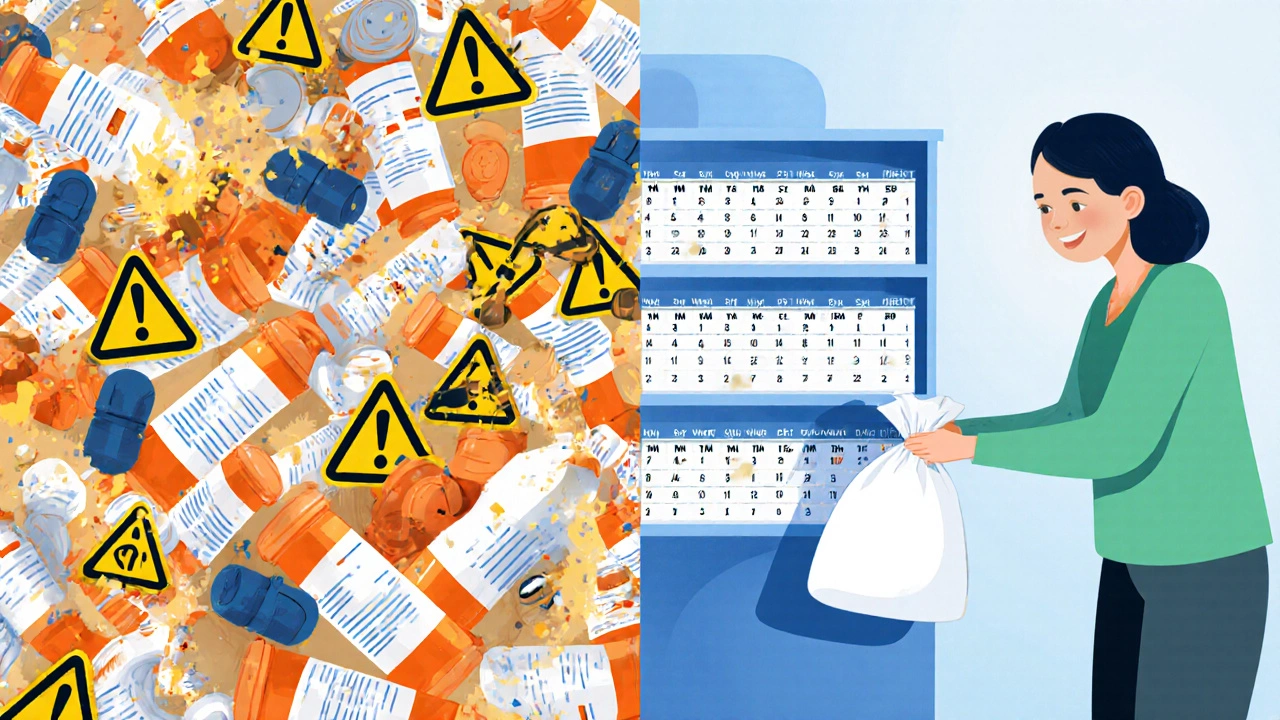
What Your Pharmacist Can See (And What They Can’t)
Modern pharmacy software can screen for over 10,000 possible drug interactions. But those systems only work if they have complete data. When you use multiple pharmacies, pharmacists see gaps. And when they see gaps, they often override alerts-not because they’re careless, but because they don’t know if the missing info is important or just missing. That’s called “alert fatigue.” A 2014 study found pharmacists override about 80% of interaction warnings when medication histories are incomplete. That number drops to under 20% when they have a full picture. Your pharmacist doesn’t just check for interactions. They also look for:- Redundant medications (like taking two different statins)
- Drugs that worsen your condition (like decongestants raising blood pressure)
- Supplements that interfere with prescriptions (like St. John’s Wort reducing the effect of birth control or antidepressants)
- Dosing errors that are easy to miss when you’re juggling 5+ pills
Who Benefits the Most?
This isn’t just for seniors. The University of Southern California’s Polypharmacy Research Group found that 15% of U.S. adults take five or more medications daily. That includes people with diabetes, heart disease, depression, chronic pain, and autoimmune conditions. Diabetes Care Community’s 2022 analysis identified five key reasons why people with chronic illnesses need one pharmacy:- Protection from drug interactions
- Avoiding duplicate prescriptions
- Access to combination pills (like metformin + sitagliptin in one tablet)
- Coordinated refill schedules
- Personalized advice from a pharmacist who knows your history
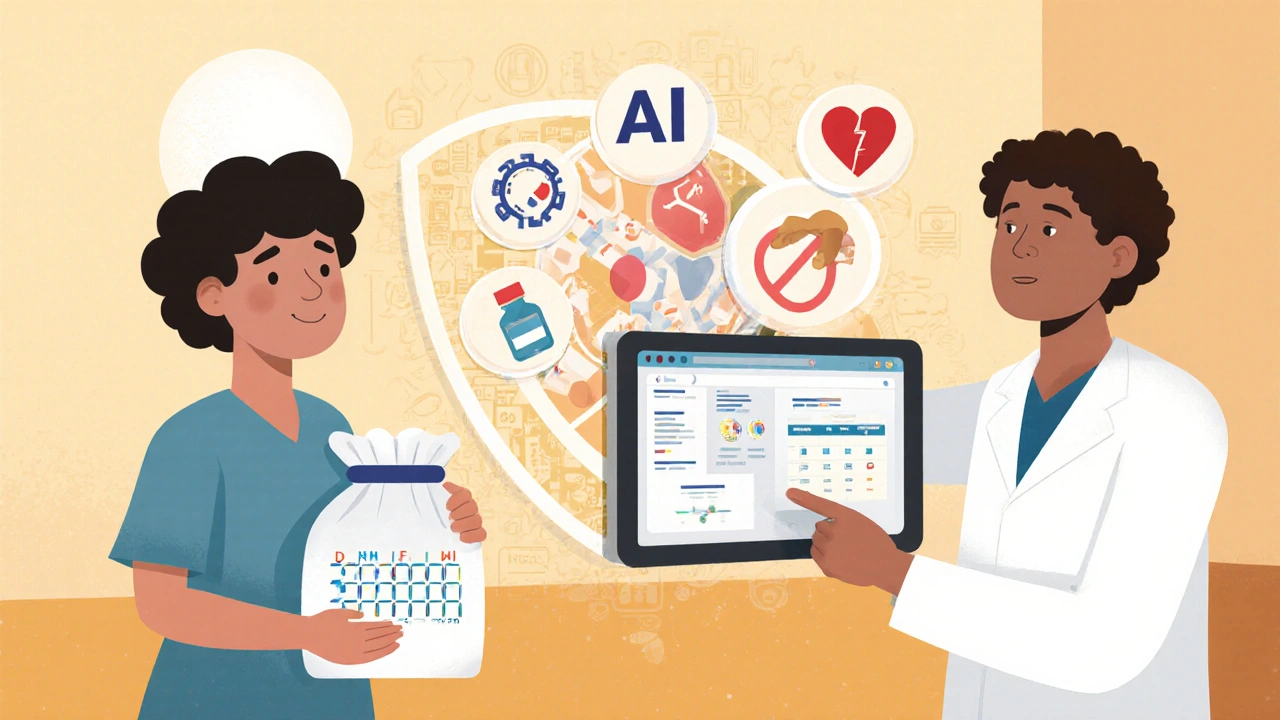
How to Make the Switch
Switching to one pharmacy takes a few weeks, but it’s easier than you think. Start by gathering a complete list of everything you take:- All prescription medications
- Over-the-counter drugs (even daily aspirin or antacids)
- Vitamins, herbs, and supplements
- Any medications you’ve stopped taking recently
- Request transfers from your other pharmacies (takes 2-5 business days)
- Review your full list for duplicates or risks
- Adjust refill dates so everything lines up
- Set you up for monthly pickups
What’s Changing in 2025
The system is catching up. In 2023, the Pharmacy Quality Alliance made “comprehensive medication review completion” a required performance metric. That means pharmacies are now financially incentivized to help patients consolidate care. The Centers for Medicare & Medicaid Services (CMS) is also rolling out new incentives in 2024 for pharmacies that hit 90%+ med sync rates. And in early 2025, the University of Southern California is launching a new AI tool that analyzes medication combinations for both risks and hidden benefits-something only possible with complete data. But the biggest barrier isn’t technology. It’s habit. Despite all the evidence, 61% of patients still use multiple pharmacies-mostly because of price. The truth? The long-term cost of a single preventable hospitalization far outweighs the annual savings from switching pharmacies. And with med sync, you get more than safety-you get consistency, clarity, and a pharmacist who actually knows you.Can I still save money if I use one pharmacy?
Yes, but you might need to be strategic. Many pharmacies offer discount programs, coupons, or loyalty rewards. Ask your pharmacist if they can match a lower price from another pharmacy. Some even have generic substitution programs that cut costs without changing effectiveness. While you might not always get the absolute lowest price on every drug, you’ll avoid costly mistakes that could lead to hospital bills-often saving more in the long run.
What if I travel a lot or live in two places?
Many pharmacies now offer mail-order services or have national networks. If you’re on med sync, ask if your pharmacy can ship your monthly supply to your second location. Some chains, like CVS and Walgreens, allow you to pick up prescriptions at any location nationwide. Just make sure your pharmacist has your updated address and knows your schedule so they can coordinate refills properly.
Do I need to switch all my prescriptions at once?
Not necessarily. You can start with your most critical medications-like blood thinners, diabetes drugs, or heart medications-and transfer those first. Then gradually move others over. Your pharmacist can help you plan the transition so you don’t run out of anything. The goal is to get everything under one roof, even if it takes a few weeks.
Will my doctor know I switched pharmacies?
Your doctor may not automatically know, but they don’t need to. Your pharmacist will update your medication record in the system, and if your doctor uses an electronic health record (like Epic or Cerner), they’ll see the changes during your next visit. You can also bring your updated medication list to your appointments to make sure everyone is on the same page.
Is this only for people on many medications?
No. Even if you’re only on one or two prescriptions, using one pharmacy gives you a consistent point of contact. Pharmacists can spot potential issues early-like a new OTC cold medicine interacting with your blood pressure pill. They can also remind you about refills, answer questions about side effects, and help you understand why you’re taking each drug. Safety isn’t just for complex regimens-it’s for everyone.

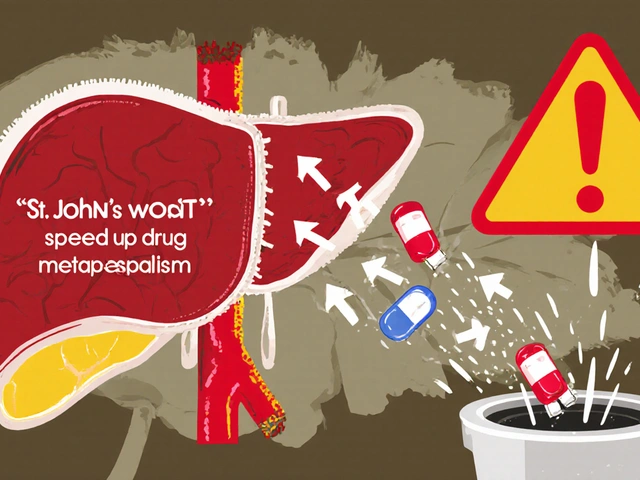
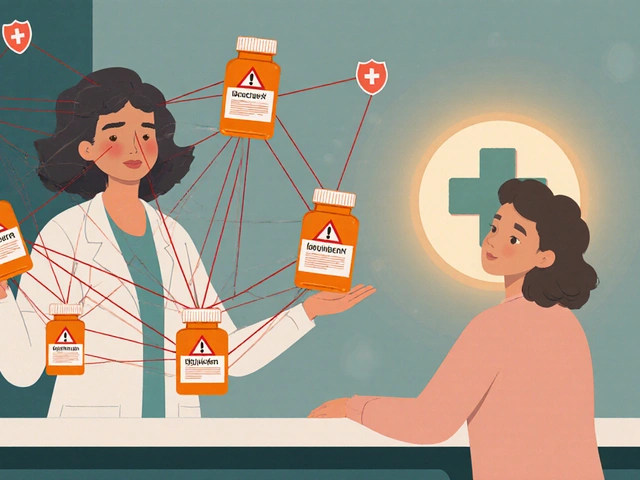
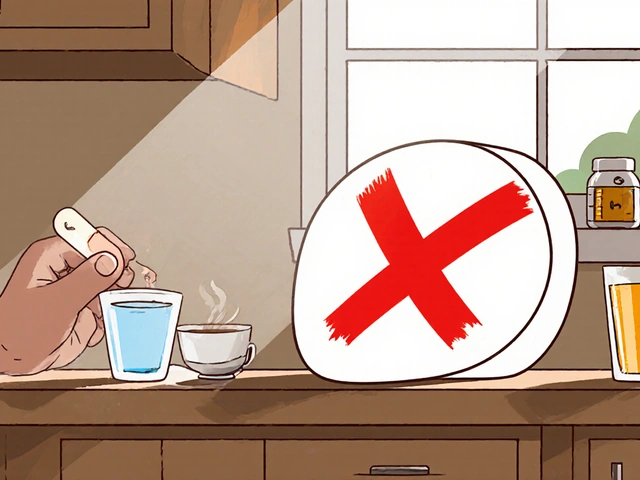
Katie Ring
November 1, 2025 AT 19:11Let’s be real - we treat pharmacies like grocery stores. Pick up your insulin here, your blood pressure med there, your ibuprofen at the gas station. Meanwhile, your pharmacist is left playing Jenga with your life. One wrong move and the whole tower collapses. It’s not about convenience. It’s about survival. If you’re on more than three meds, you’re not managing your health - you’re gambling with it.
Eileen Choudhury
November 3, 2025 AT 03:45OMG YES. I switched to one pharmacy after my grandma almost went into a coma from two different acetaminophen prescriptions. Now she gets her meds on the same day every month, and her pharmacist even calls her if something looks off. She calls him her ‘med guardian’ 💖 I’m telling everyone. This isn’t just smart - it’s love in action.
Manuel Gonzalez
November 3, 2025 AT 17:27Been using med sync for 18 months now. My pharmacist knows my meds better than my primary care doc. She caught a dangerous interaction between my fish oil and my new anticoagulant before I even filled the script. No drama, no panic - just a calm text: ‘Hey, let’s talk about this.’ That’s the kind of care you pay for - and it’s free if you stick with one place.
Zachary Sargent
November 5, 2025 AT 14:41Y’all are acting like this is some revolutionary breakthrough. It’s not. It’s basic hygiene. You don’t use three different toothbrushes and expect your teeth to be healthy. Why do you think your meds are different? This is just common sense dressed up in a white coat.
Andy Ruff
November 5, 2025 AT 17:35Of course you’re supposed to use one pharmacy. But let’s not pretend this is about safety. It’s about control. Pharmacies want you locked in so they can upsell you supplements, push their private-label generics, and track your every pill like a surveillance state. They don’t care if you live - they care if you keep coming back. And don’t get me started on how they ‘adjust’ your refill dates just to keep you dependent. This whole system is a profit-driven trap wrapped in a safety blanket.
Matthew Kwiecinski
November 5, 2025 AT 22:51Actually, the 34% higher risk statistic is misleading. The study controlled for age and polypharmacy but didn’t account for socioeconomic factors. People using multiple pharmacies are often low-income, uninsured, or forced to shop around because of formulary restrictions. The real issue isn’t pharmacy fragmentation - it’s the broken healthcare pricing system. Blaming patients for using multiple pharmacies is like blaming someone for eating fast food because they can’t afford groceries.
Brittney Lopez
November 7, 2025 AT 06:23My mom’s on 8 meds. She used to forget half of them. After switching to med sync, she started remembering her doses - not because she’s more disciplined, but because she has one day a month to focus on her health. Her pharmacist even printed out a color-coded chart. It’s the little things. You don’t need a tech solution - you need a human who remembers your name.
Jens Petersen
November 8, 2025 AT 06:45Look, the entire narrative here is corporate propaganda. CVS and Walgreens don’t give a damn about your safety. They care about your data. They sell your medication history to insurers, pharma reps, and data brokers. Med sync? It’s a loyalty program disguised as public health. And don’t even get me started on how they ‘adjust’ your meds to push brand-name drugs over generics. The real danger isn’t fragmented pharmacies - it’s corporate consolidation of your health records.
Dade Hughston
November 9, 2025 AT 14:54So what if you save 150 a year by switching pharmacies. You know how much a hospital stay costs. 8k. 10k. And you think you’re being smart. You think you’re saving money. You’re not. You’re just playing russian roulette with your kidneys your liver your heart and your life. And then you wonder why your insurance premiums keep going up. You think you’re outsmarting the system. You’re just feeding it.
Jim Peddle
November 10, 2025 AT 13:10There’s no such thing as ‘medication synchronization.’ It’s just a rebranding of centralized control. The government and Big Pharma are pushing this because they want your data locked into a single system so they can predict your health outcomes, deny you coverage based on ‘non-compliance,’ and manipulate pricing. This isn’t safety. It’s surveillance. And they’re selling it to you as kindness.
Adarsha Foundation
November 12, 2025 AT 12:56I come from India, where most people don’t even have a fixed pharmacy. But I’ve seen families who use one pharmacist - they treat him like family. He remembers who takes what, who’s allergic to what, who needs a refill next week. It’s not about technology. It’s about trust. Maybe we don’t need AI or algorithms. Maybe we just need someone who cares enough to remember.
Alexa Apeli
November 14, 2025 AT 05:11Just switched to one pharmacy last month. My pharmacist called me yesterday to ask if I was feeling okay - said my blood pressure med refill was late. I hadn’t even noticed. She’s not just filling prescriptions. She’s watching over me. 🤍 Thank you for this post - it’s not just advice, it’s a lifeline.